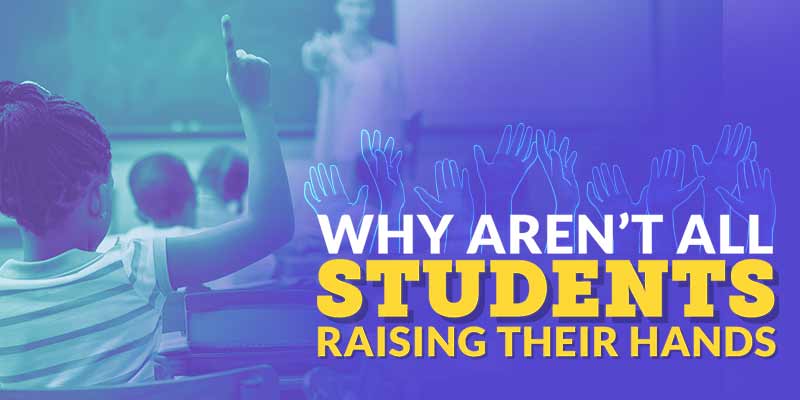
Checking for Understanding by Calling Non-Volunteers.
When addressing the idea of selecting non-volunteers for the purpose of asking students questions, one needs to consider two things: 1) Do students know the answer? and 2) Are they ready to give the answer? Here’s why we should NOT call on students who raise their hands.
Typically, teachers are satisfied with a “few raised hands” and call on individual students to answer a question. Most of the time, students are perfectly satisfied with letting other students raise their hands and answer questions. But the real question we should be asking is, “Why aren’t all students raising their hands?” You see, we’re not trying to find out how many students know the answer; we’re really trying to find out how many students don’t know the answer, and why they don’t.
So, another way of approaching Checking for Understanding is to think of it as Checking for Confusion. You see, after we have taught a lesson, we gauge the results of effective teaching by how many students (80-100%) can accurately answer the question. And calling on Non-Volunteers will give us a more accurate assessment/feedback on whether students have: 1) Paid attention; 2) Followed Instruction; 3) Achieved mastery; and 4) Recalled Information.
The second important component to consider when calling on non-volunteers is the idea that every student should be prepared to answer a question! Think about it this way. If every student thought that they would (or could) be called on for every question, wouldn’t students be more engaged? True calling of non-volunteer students means that the possibility of students being called on more than once or even two times in a row can occur at any time. Imagine the attention our students would exhibit if they thought that, throughout the lesson, their names or number could be called at any moment because it was “random selection.”
Finally, true randomization means that even the teacher does not know who will be called. This sets up the scenario: if every student (including Special Ed and ESL) can answer the question, it means that the teacher effectively taught the Skill or Concept. Even better, it shows that all students were paying attention, not just the few who raised their hands. And after all, isn’t that the outcome we all hope for? They have learned, and they are engaged.
Here is our research, more articles, training, and resources for CFU:
Research behind Checking for Understanding
The Importance of Checking for Understanding
How to Check for Understanding Using TAPPLE



